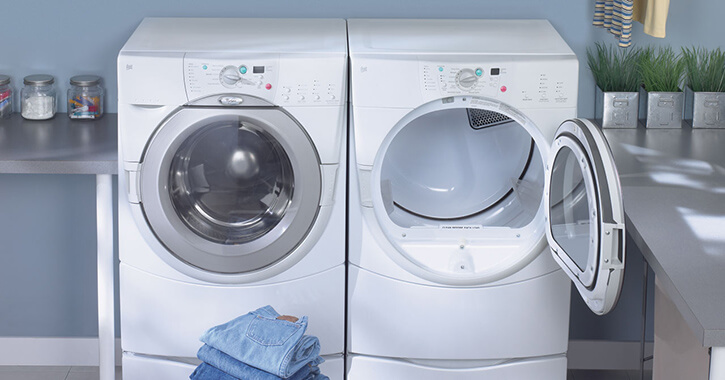The Most Power-Hungry Home Appliances

If your attempts at reducing your electricity usage aren't having the impact that you desire, the problem may be that you have one or more power hungry appliances lurking in your home. Inefficient appliances can wreak havoc on your budget, but the first step to resolving the issue and regaining control over monthly spending is to identify these energy hogs and replace or repair them with more energy efficient models. Mr. Appliance® is here to help, with our list of the most common power-hungry appliances found in homes today.
How is Energy Consumption Measured?
The rate at which electricity is used at any given moment is measured in watts. For example, a 30-watt light bulb draws 30 watts of power at any given time while it is on. Killowatts and killowatt-hours (kWh) are measurements used to show the amount of energy used by large household appliances, and are expressed on your monthly energy bills. One killowatt is equal to one-thousand watts, and one killowatt-hour is one hour of usage at one-thousand watts. The average home in the U.S. consumes approximately 7,200 kWh per year.
Cooling System
Your air conditioner helps to control both the temperature and humidity in your home during the hot months of the year, but although these hard working appliances can improve comfort they can also account for a big part of your annual energy usage. Expect to use between 300 to 900 kWh per month depending on the size and efficiency of your central AC. Conserve energy without losing comfort in your home with these tips:
- Schedule annual maintenance
- Install a programmable thermostat
- Upgrade to a high efficiency AC
Heating System
Even though your heating system is likely to be the biggest energy hog in your home, just how much you spend during those chilly months will depend on the efficiency and type of system you own. An older or inefficient electric furnace can use as much as 3,500 kWh per month, while a more efficient model operates at closer to 1,500 kWh per month. Tips to reduce usage include:
- Use a programmable thermostat
- Seal air leaks
- Replace air filters regularly
Water Heaters
Hot water is used for a number of everyday operations from bathing to dishwashing, but the amount you spend to heat it depends on the type and size of your tank, and how high you have it set. With an average household consumption of 400 kWh per month your water heater is one of the top power-hungry appliances in your home, but you can reduce that number with these tips:
- Turn down the temperature to 120 degrees
- Insulate the tank
- Wash clothing in cold water and skip the extra-long showers
Clothes Washers and Dryers
In combination, these two appliances account for approximately 14 percent of your annual energy costs. Reduce your spending by washing only full loads, rinsing in cold water only, and routinely cleaning the lint trap in the dryer.
Dehumidifiers
Those living in humid climates understand the value of a dehumidifier for removing excess moisture from their interior spaces. Continuously running this useful appliance may help to prevent mold growth, but it can also use around 150 kWh per month. Avoid wasting energy by setting the humidistat to 50 percent, or upgrading to a more energy-efficient unit.
In your pursuit of energy savings don't forget to turn off your lights. To learn more about the benefits of upgrading your old or inefficient appliances to new high efficiency models, contact your local Mr. Appliance today!


